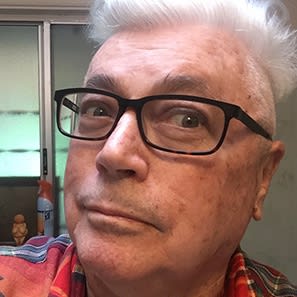
“To me, nothing seemed familiar, yet, everything was very, very familiar. At first I suffered from culture shock. I wanted to photograph everything, thousands of photographs. Then slowly I began to put my thoughts and feelings together and to document Americans in Suburbia. It took two years. The photos in this book express the lives of the people I know. The comments on each photograph are what the people feel about themselves.”
— Bill Owens, statement for Suburbia
The earliest suburbs in the United States were founded around the turn of the century, but in the decades following World War II suburban development exploded and the suburbs were soon home to the majority of Americans. In the late 1960s and the 1970s, in the midst of this boom, Bill Owens carried out a groundbreaking photographic study of suburban life in Livermore, California, where he worked as a staff photographer for the local newspaper. His first book, Suburbia, depicted events such as neighborhood barbecues, Tupperware parties, PTA meetings, and garage sales, and featured people in their homes and yards as they watered their lawns, watched their children, or dipped into their liquor cabinets. A seminal portrayal of a burgeoning way of life, the book received immediate critical acclaim and has influenced a generation of photographers. Following Suburbia, Owens looked beyond the domestic sphere to examine other facets of suburban living, eventually publishing three additional volumes: Our Kind of People: American Groups and Rituals (1975), Working: I Do It for the Money (1977), and Leisure (2004), which was finished around the same time but shelved for nearly three decades.
As numerous artists and critics have observed since the release of Suburbia, the novelty and impact of Owens’s photographs stem from the fact that he saw mundane elements of mainstream life as worthy photographic material, and then, improbably, delivered images that make banal moments seem both familiar and extraordinary, or even downright peculiar. Owens thought of himself as visual anthropologist of sorts, setting out to document the world he lived in, and his photographs have a direct and unembellished style. Nevertheless, they reveal a deadpan sense of humor and a complex, even confounding mixture of irony and empathy. Owens has stated, “The people I met enjoy the life-style of the suburbs. They have realized the American Dream,” and his pictures are exuberant and largely optimistic. At the same time, Owens courts the fact that an ideal can take on tarnished or even farcical manifestations in reality, and in many of his images elements of humor and pathos converge.
Owens’s project is remarkable not necessarily as a representative study of American suburbia but rather for the ways in which his images speak to prominent ideological currents of the era and resonate with notions of what middle class life was supposed to entail. An idea of the American Dream underwrites the lifestyles of Owens’s friends and neighbors in these images, and the pervasive visual representations of this ideal form the unseen backdrop for Owens’s work. Throughout the 1940s and 1950s, and even into the 1960s, popular magazines such as Life and Look published a steady stream of images of happy suburban families and home-owners, and Owens’s photographs capture his subjects’ concerted efforts to enact this “picture-perfect” lifestyle for themselves. One gets a sense of the weight of certain expectations in the beaming smiles that many of the suburbanites display, in their common activities, and perhaps most explicitly in the respective captions they provided to accompany each image.
Born in San Jose, California in 1938, Owens began to pursue photography while serving in the Peace Corps. He started working as a photographer in 1968 and since then has been the recipient of a Guggenheim Fellowship (1976) and a National Endowment for the Arts award (1977). His photographs have been widely exhibited at institutions such as the Museum of Modern Art, New York; Los Angeles County Museum of Art; San Francisco Museum of Modern Art; International Center for Photography, New York; National Museum of American Art, Washington, D.C.; and Bibliotheque Nationale de Paris. Despite an established reputation, Owens withdrew from the public eye and in 1983 he founded Buffalo Bill’s Brewery in Hayward, California—one of the first brew-pubs in the country. More recently Owens has returned to photography and in 2004 Fotofolio published Owens’s unreleased volume, Leisure. Owens’s landmark book Suburbia was reissued in 1999 and an eponymous monograph combining new work and photographs from his earlier period was published by Damiani in 2008.
Biography Courtesy Museum of Contemporary Photography
Copyright 2005–2011 Museum of Contemporary Photography. All rights reserved.
